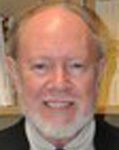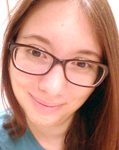Nov. 20, 2013
By Katie Kane
Highlighting the destruction and scientific make-up of the meteor, Dr. Paul Rybski spoke about the 2013 Russian meteor event on Friday night in Upham Hall.
 “We are in a dangerous neighborhood,” Rybski said, starting off the lecture.
“We are in a dangerous neighborhood,” Rybski said, starting off the lecture.
On Feb. 15, 2013, at about 9:20 a.m., a meteor about 19 meters in diameter crashed through the atmosphere falling over Chelyabinsk State, Russia. The space object was about two times brighter than the sun and injured about 1,000 people. No deaths were reported.
Rybski showed videos of this event caught on camera by Russian civilians.
“I think I would pass out if I saw something like this over our sky,” said junior Samantha Viken, who attended the lecture. “It was insane, like something out of a movie.”
The meteor soared through the horizon dropping debris as it disintegrated in the sky. The meteor did not actually collide with Earth’s surface, but the debris caused a lot of damage along with the meteors sonic boom.
Windows were blown out, and building structures crumbled.
“At least not in my lifetime have I ever been able to witness something this big,” Rybski said.
The energy deposited by the explosion was about 500 kilometers of TNT-equivalent.
”A lot more damage would have been done if it were to collide with Earth’s surface.” Rybski said. “This really worries many people.”
Many people attending the lecture were curious if scientists knew that this meteor was coming. Rybski said the answer to that was no.
Scientists could not predict the arrival of this meteor because, surprisingly, it was too small for current technology to detect. Scientists cannot be sure that another incident such as this will occur in the future.
This lecture was the last of the series. However, Rybski says a second series is planned for the upcoming semester. The observatory portion of the lecture was cancelled due to overcast.
“I’ve always been interested in space, and I really loved Dr. Rybski’s astronomy class,” said senior Elizabeth Peterson, who assisted Dr. Rybski with the lecture.
“The lecture series gives me the opportunity to learn about topics not normally discussed in the classroom and have a good discussion with other people who are also interested in the subject (as opposed to classes where students only show up because they have to).”
The lecture series is open to the public, and students are encouraged to attend. Topics vary throughout the series, and there is no fee to enter, and no reservations are required.

